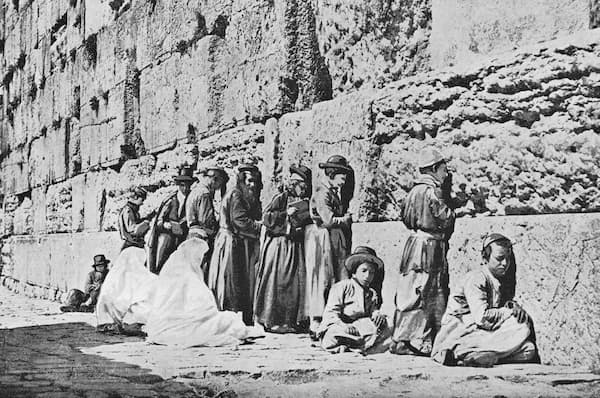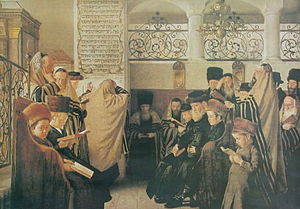From its humble beginnings in the Geonic period, the practice of showing sorrow during the days of the Sefira has come a long way. The sole mention in the Geonic literature spoke of the minhag of some people not to conduct weddings during that period, but also suggested that one could have a wedding without asking for permission. Today, the list of things one should not do includes:
- Getting married (without exceptions).
- Having a haircut.
- Shaving.
- Wearing new clothes.
- Eating a new fruit.
- Moving to a new house.
- Renovating a house.
- Clipping nails.
- Traveling.
- Bathing in a river or in the ocean.
- Weaving or knitting (for women after sunset).
- Mending clothes.
- Dancing, even without music.
- Listening to live music.
- Listening to recorded music.
- Listening to a Capella music.
Not all of these are agreed on by all, and some are mentioned with the formula of “even though some people avoid this, there is no need to be strict”, but the fact is that there are many who avoid even the actions which the Poskim do not consider forbidden. Furthermore, there are those who recommend even for Sepharadim, who usually observe the Sefira restrictions until the 34th of the Omer, to continue their practice until Shavuot.
How did this happen? It is probably a combination of several factors:
- Abstinence and self-deprivation are viewed as a way to atone for sins and avoid punishment. They are also an expression of the survivors’ guilt-complex.
- Most people’s recollection of history extends to about a hundred years to when their grandparents were born and to the stories they heard from them, so even a recently-introduced practice quickly becomes “this is what we always did.” Once one layer of Minhag becomes sanctified, new layers are added for protection, and as the process repeats, the original grain becomes a non-rolling stone.
- Control. The religious leadership sees adherence to tradition, even one that can no longer be justified, as a means to control their followers and maintain the integrity of the orthodox world. Their intention might be pure, as the wish to save the nation from spiritual deterioration, but often the result is exactly the opposite, and people drift away from observance which has become intolerably complicated and intricate.
I would like to expand a little on the first factor. I am sure many of the readers are familiar with the tendency to be strict “just in case”, as well as with its restrictive consequences, but I would like to focus on the concept of days dedicated to joy or sorrow, and how it has changed since biblical times.
The Torah’s calendar knows seventeen days of joy and one of solemn contemplation and fasting. The days of joy are the seven days of Pesah, Shavuot, Rosh HaShana, seven days of Sukkot, and Shemini Atzeret. The one exceptional day is Yom HaKippurim. In addition to the holidays, Shabbat and Rosh Hodesh are considered days of joy.
In today’s orthodox calendar the days of pure joy which remained from the Torah’s calendar are the first and last day of Pesah and Sukkot, and the one day of Shavuot. That’s five instead of seventeen. Of course, there are also the eight days of Hanukkah, and one of Purim which make it fourteen (and five days of second Yom Tov outside Israel).
On the other hand, the category of restrictive days has known wonderful growth. The number of those days varies from year because of the way some dates overlap, so for demonstration I will use the current Hebrew year, 5779:
Rosh HaShana (2); Fast of Gedaliah; Days of Penitence (5); Kippur; Hol HaMoed Sukkot (4); Post Sukkot fast (3)[i]; Tenth of Tevet; Shovavim (8)[ii]; The Seventh of Adar; Fast of Esther; Fast of the First Born; Omer (35); Seventeenth of Tammuz; The three weeks (17); Tisha BeAv; Selihot (24);
To that we should add the remaining Shabbatot (49, excluding those which are also Yom Tov)[iii], Rosh Hodesh (15)[iv], and Erev Rosh Hodesh (10)[v].
The total is a one hundred and seventy-nine days, or close to fifty percent of a solar year. I believe that this proves the argument presented above.
The question is: how do we get out of this situation?
[i] Not observed by all. Known as בה”ב, and is observed as a fast on Monday, Thursday, and Monday of three weeks following Sukkot.
[ii] Not observed by all. Fasting on Thursdays of the eight weeks from Parashat Shemot to Teruma.
[iii] The rabbis forbade weddings on Shabbat for secondary reasons, and in Medieval times the Rema explains that the Kohanim do not bless the people on Shabbat because they are saddened, and that true joy is only on Yom Tov.
[iv] Which was interpreted by the rabbis as a day for atonement not only for our sins, but for God’s as well, as if it were.
[v] Known as Yom Kippur Katan.









Parashat Behar – Weekday Torah Reading (Moroccan TeAmim)